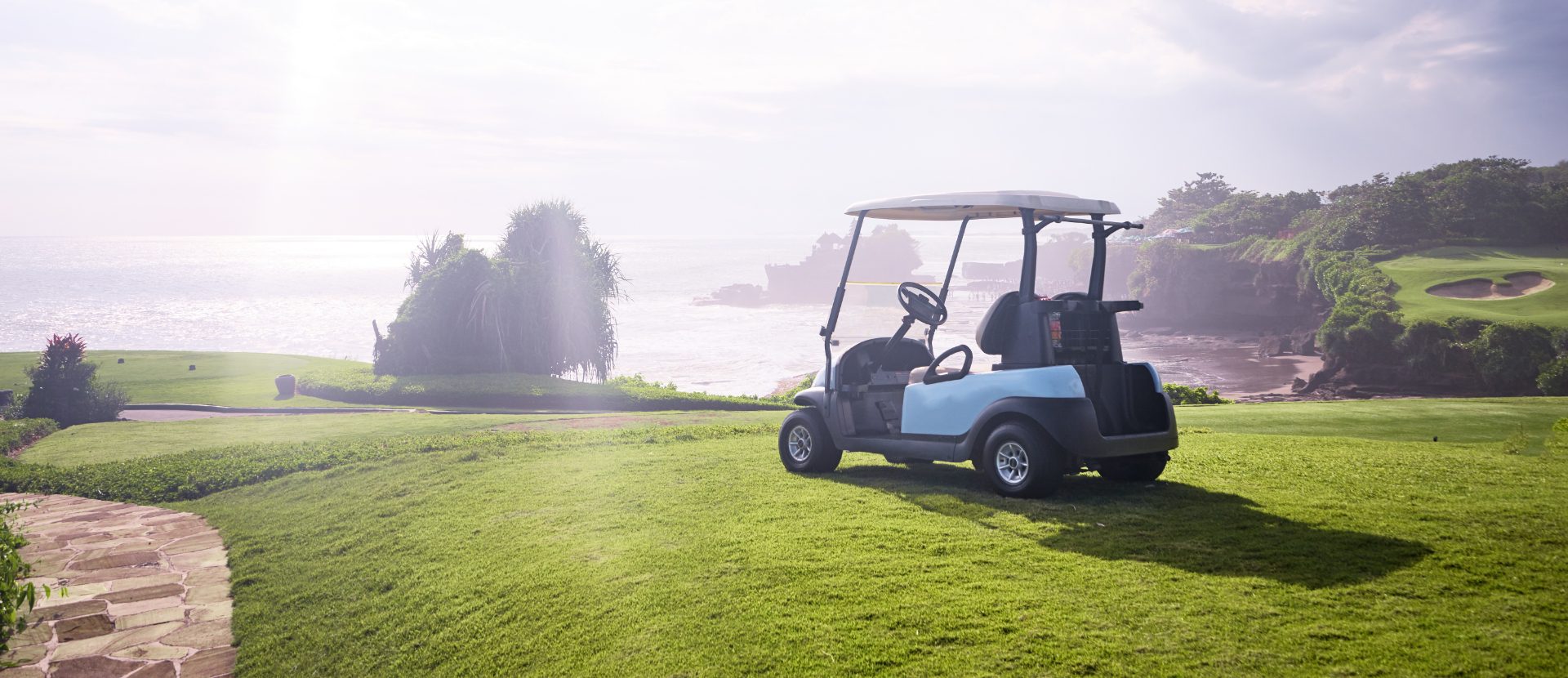Simple Rules for Buying the Right Golf Equipment.

Be honest. What you really need is a swing change. But what you really want is a new driver. Or a sand wedge. Or a putter. And you want it so much, you’re not merely dropping hints to anyone who’ll listen, you’re tearing out catalog pages and leaving them on the living room coffee table. The trouble is, like everything in golf, buying golf equipment isn’t as easy as window shopping. It’s a world of precision, and all that precision is designed to help you enjoy the game. Still, it can be confusing, whether you’re buying for yourself or someone else. Let me show you the best way to approach the buying process. Go slowly and study the information in these eight simple rules, and you just might get what you need — and what you want.
1. Know your golf skill level
Despite what the ads say, you are not Tiger Woods. What you are is either a beginner, an intermediate player (somebody who shoots 80 to 95, let’s say) or an advanced player (someone who consistently breaks 80, or about 7 percent of the male golf population and less than 1 percent of the female golf population). Each level of player needs something different.
Beginner Golfer:
This group needs as much help as possible. Believe it or not, that often means less equipment, not more. You don’t need to go through an extensive fitting program, because you really don’t know how to swing yet. Ask for clubs that fit your strength and general posture when you stand to the ball properly. A basic set that includes two or three woods (choose from the following: Driver with a 10-13 degree loft, 3-, 5- and/or 7-wood) and a handful of irons (5-, 7- and 9-iron, pitching wedge, sand wedge) and putter are plenty. That’s not to say you shouldn’t buy a full set of clubs, just put the rest of the set in storage until you need them. The clubs you buy should be forgiving. Oversize, perimeter-weighted clubs will help you enjoy the game.
Intermediate Golfer:
This is the bulk of the golf nation and who most new equipment is designed to satisfy. You can have your pick of any clubs you want, but I’d focus on forgiveness. You want your misses to stay in bounds. Most companies will be happy to tell you which of their irons are most forgiving. As for comparing or testing various clubs from competing manufacturers, some are more worthwhile than others. One interesting concept is a special project from club design expert Ralph Maltby called the Maltby Playability Factor, which rates clubs in terms of forgiveness. But the only comparison rating that really matters is yours.
Advanced Golfer:
The entire cornucopia of golf equipment is at your doorstep, but even for you, I’d still lean toward clubs that offer forgiveness. Still, you are on the verge of being able to play irons that mix perimeter weighting with a more traditional-looking blade design. Don’t make the switch, however, unless you believe you are being held back by your current equipment.
2. Know what golf clubs you need
A set of three woods and eight irons has been the standard configuration. Not anymore. Assuming you are past the beginning stage of the game, get yourself custom-fit for irons. The fitting procedure may tell you things about your game you didn’t know. Like maybe you’re playing the wrong shaft. Most average golfers swing clubs with shafts too stiff, and they are continually fighting the club, trying to produce that one shot out of 20 in which everything comes together.
How do you know the shaft is too stiff?
If you can’t feel where the clubhead is during the swing, this may be one consequence, but again, it’s what feels right to you. You want to feel in control of the clubhead. Regardless of how good you think you are, I recommend you take a pass on the X-Flex shaft and the 1- and 2-iron. If you put more hybrids or even higher-lofted woods in your bag, you’ll likely improve your score without changing your swing.
3. Bigger is better in drivers — Sometimes
There’s a reason the drivers you see in magazines are the size of a genetically mutated grapefruit. Supersize often means a greater moment of inertia. (forgiveness). Bigger also means the driver likely will be made of titanium and have the spring-like effect that provides better transfer of momentum from the clubhead to the ball (resulting in more distance).
There is a point of diminishing returns, however. Once you get much beyond 400 cubic centimeters (more than twice the size of Callaway’s original Big Bertha), the forgiveness factor starts flattening out – diminishing returns and the head gets too cumbersome.
Be leery of the length of your driver’s shaft, too. The best players in the world, who can have any length shaft they want, have settled on 44 or 44 3/4 inches (Tiger has even used a 43.5 inch driver). Your typical off-the-rack titanium driver has a 45-inch shaft. My advice: Go for a shorter shaft or grip down a little. There will not be any significant loss of distance, and your accuracy will improve.
4. Consider price when picking a golf ball
The average player will not lose anything by playing the best, most expensive tour balls on the market. But the average player likely won’t notice any difference in performance using the less expensive models, either. My shopping rule for balls is a simple one: If someone is buying the balls for you, go for the gold standard. If you’re buying them yourself, be thrifty. Remember: Most balls today are better than the golfers who choose to use them.
5. Get on a launch monitor
Science now tells us the best launch conditions for a driver at 110 miles per hour are 12 to 13 degrees above horizontal with a spin rate of 2,200 to 2,500 revolutions per minute. Slower swing speeds require higher launch angles and more spin.
Science also has managed to develop good launch monitors that can evaluate this information from your swing. Use a launch monitor with caution it is a guide only and will get you into the right range of conditions you seek.
The rest is up to you unless you are a super elite golfer and need to tweak your equipment. If you are hitting the sweet spot try to get a ball speed of 1.4 to 1.5 times your swing speed. If the (good) launch monitor shows you’re not doing that, you may need to change your driver, your swing or both.
Most drivers today are a lot better than we are so get enough loft 10 degrees to 15 degrees if your swing speed is slow (75 mph) and the make sure the shaft flex suites your swing speed. A rule of thumb is, Stiff for 90 to 100 mph, R-flex for 75 to 90mph and A-flex for below 75 and below.Â
6. Fill the gap in your wedge game
Equitably space your wedge lofts, but always make sure the sand wedge (56 degrees) has a decent bounce angle.
Today’s iron lofts are about a club and a half stronger than they were 25 years ago. (Jack Nicklaus’ 8-iron of yesteryear is nearly equal to some of the stronger pitching wedges out there today.) Club manufacturers have designed them that way to make us feel as if we’re hitting the ball farther. The problem, however, is the loft on the typical sand wedge has remained at 56 degrees. Consequently, there’s probably a gap somewhere in your wedge game.
Here’s what to do:
Identify the loft on your 9-iron or pitching wedge (if you don’t know, your club pro or the manufacturer can tell you). Decide if you need a wedge with a loft between your sand wedge and pitching wedge. You don’t want more than 4 or 5 degrees loft difference between your wedges, otherwise you’ll find yourself with a yardage and no full-swing club that carries that distance. Furthermore, if you buy a lob wedge (and I’m not convinced most players need one), be careful not to get one with too much bounce (the trailing edge of the club’s sole is lower than the leading edge of the club). A lot of bounce, typically found on a sand wedge, is only helpful out of heavy rough or soft sand. From a tight lie, you might blade shots over the green.
7. Use golf clubs with proper lie angle
Once you reach the intermediate level, getting fitted for irons is important, if you are considering buying new golf equipment. Well-struck approach shots may miss the green if your clubs don’t fit you. Specifically, the issue is lie angle. Ideally, the sole of the club as it makes contact with the ball should be level with the ground. If the toe is up, then well-struck shots will go to the left and you will need to flatten the lie. If the toe is down then well-struck shots will go right, and the lie needs to be more upright to correct the flight. Make sure you’re being fit for your swing, not just your setup. A good clubfitter will have you hit shots off a lie board, which is a type of mat that will leave a mark on the sole to show how to adjust the lie if necessary.
If lie angle is off, it will be most obvious in short-term accuracy.
8. Invest in a new putter
Approximately 45% of your score is generated on the putting green, therefore a good putter is essential. You use your putter more than any other club in your bag.
When considering your next putter, understand that the shape and weight distribution of the putter is important in determining its forgiveness. There are basically three head shapes for conventional length putters.
a) The Blade; b) The Mid mallet; and c) The Mallet (see images below of the Frankly Frog Putters I designed available in each shape)
Mallet style putters are more forgiving, whilst blade style putters are less forgiving.
Putter length is crucial and many golfers are putting with putters that are too long for them. Make sure that your putter is the correct length and fit. Once you have the correct putter, now it’s time to brush up on your putting stroke. We have a Free Putting Guide that you can consult to get you started.
Click here to request Your Free Putting Guide
9. Take a golf lesson
The best gift for a golfer, no matter who is paying for it, is a lesson. This will cost about one-fifth of the price of a good driver and one-tenth the price of a new set of clubs — and may be better for your game. Almost as good, and even better for your quality of life, is a gym membership. Good strength and flexibility will do as much or more for your game as new equipment. It may not be as much fun as waggling that new driver, but come next summer when your workouts have made you healthier and stronger, your game should improve, too. Furthermore, an exercise regimen will help you avoid injuries. Because if you’re injured, you won’t be able to test all the new golf equipment, right?
-Frank Thomas
Frank Thomas was Technical Director of the USGA and Chief Equipment Advisor to Golf Digest and Golf Channel.
P.S. If you enjoyed this article about buying golf equipment, you will also enjoy my article “Simple Rules for Buying a New Putter“. You can also visit my Golf Equipment Help Center with more interesting information to help you make smarter golf equipment decisions.
